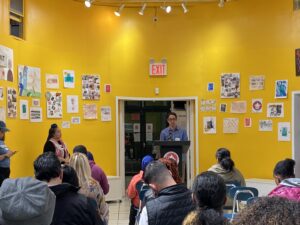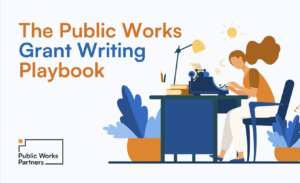What is Urban Placemaking?
Urban Placemaking is not necessarily a new practice, but it is gaining prominence among planners throughout the United States. Contemporary placemaking emerged in the 1960s through the works of Jane Jacobs and William H. Whyte, who based their research on the social construction of urban areas. Their activism and sociological studies encouraged people in subsequent generations to advocate for cities and communities to be more citizen-focused, rallying for changes they felt met their needs, uplifted their culture, and/or built upon their existing assets. As a current placemaking student, my definition of placemaking derives from the moment planners and urban designers shifted their focus from buildings to a focus on the spaces between those buildings – i.e. public space.
Placemaking is a practice that shapes public spaces through collaboration with community stakeholders. Originally falling under the urban planning and urban design umbrellas, placemaking incorporates multidisciplinary practices adjacent to the planning field to create sustainable, resilient communities. Today, you can find placemaking principles and practices leveraged across various fields. Placemakers direct their focus to the built environment and hone in on spaces that might be underutilized, underdeveloped, or could use some TLC. While the main goal is to address community needs and improve the physical programming of the space, placemaking works to highlight and uplift community assets in the process.
At its core, placemaking is about participatory planning, or the practice of bringing community members into the planning process to shape the future of their neighborhood. Participatory planning depends on equitable and accessible community engagement in order to ensure that as many community members as possible can engage. Engagements can run the gamut from tabling in local public spaces to small group discussions to online surveying. The essential piece is that the engagements are designed to support the agency of the community and that they reflect community members’ needs.
There are a number of ways to create accessible and equitable engagement strategies. For the NYC Streets Plan, a five-year plan to set equitable and ambitious goals for New York City’s streets, Public Works developed an interactive online platform to gather feedback from New Yorkers. We ensured that the platform was available in NYC’s 10 most common languages and planned for an extended period during which New Yorkers could provide feedback. We are also conducting additional outreach through phone calls and texting to those communities who were less responsive to the online survey. Learn more about our phased engagement process here.
Small group discussions, which provide community members the opportunity to participate and share ideas without the competition of a large group, are also great tools for fostering community participation. This setting allows community members to build off each others’ ideas, build connections, and approach local initiatives from new perspectives. Public Works recently led focus groups to support a public awareness campaign for NYC Well, which resulted in the creation of a community informed design and strategy for the campaign. You can find out more about this process here.
What about place-keeping?
The practice of place-keeping is just as important as placemaking. Cities are full of rich and intricate histories that can get lost to development over time, often occurring hand-in-hand with gentrification. It is important, now more than ever, for planners and placemakers to look beyond the price tag and celebrate the cultural value of a space or building. Planners should utilize their advocacy skills to identify and protect public spaces and historic buildings that are of significant meaning to a community.
A lot of placemaking has indirectly unfolded during the Covid-19 pandemic. Across the nation, we saw streets being reclaimed for business support and expansion as well as community recreation and leisure activities. Parking lots and gardens were transformed into outdoor classrooms. Lincoln Center’s concrete plaza became a new green space. Pedestrian-only areas and streets became a top priority in vehicle-dense cities. A very popular activity that placemakers have been using, especially on open streets, is tactical urbanism, a practice that leverages low-cost, high impact interventions that directly involve people in the community.
Another emerging goal among planners and placemakers is place equity. This includes making spaces that are inclusive and accessible for all community members regardless of age, gender, race, religion, or physical ability. Equity also means addressing and taking into account historic imbalances in planning, funding, and design. The pandemic drew attention to the many inequities that exist in our cities, such as the inequitable access many minority groups have to green spaces amid recommendations to spend more time in outdoor areas. This not only pertains to backyards or rooftop garden access, but also extends to living proximity to parks and other open spaces.
Public space and community engagement are central focuses of urban placemaking and place-keeping. These practices demand thoughtful community engagement strategies that not only keep communities informed but help them to shape and implement their visions for the future while respecting their histories. Public Works Partners drives community engagement efforts that strike this balance for a variety of clients, from community based organizations to large development entities. Interested in learning more about how we can help your next placemaking initiative? Reach out at info@publicworkspartners.com.





 Public Works Partners is a WBE/DBE-certified urban planning and consulting firm. Our expertise lies in creating innovative, equitable, and sustainable solutions to complex problems.
Public Works Partners is a WBE/DBE-certified urban planning and consulting firm. Our expertise lies in creating innovative, equitable, and sustainable solutions to complex problems.